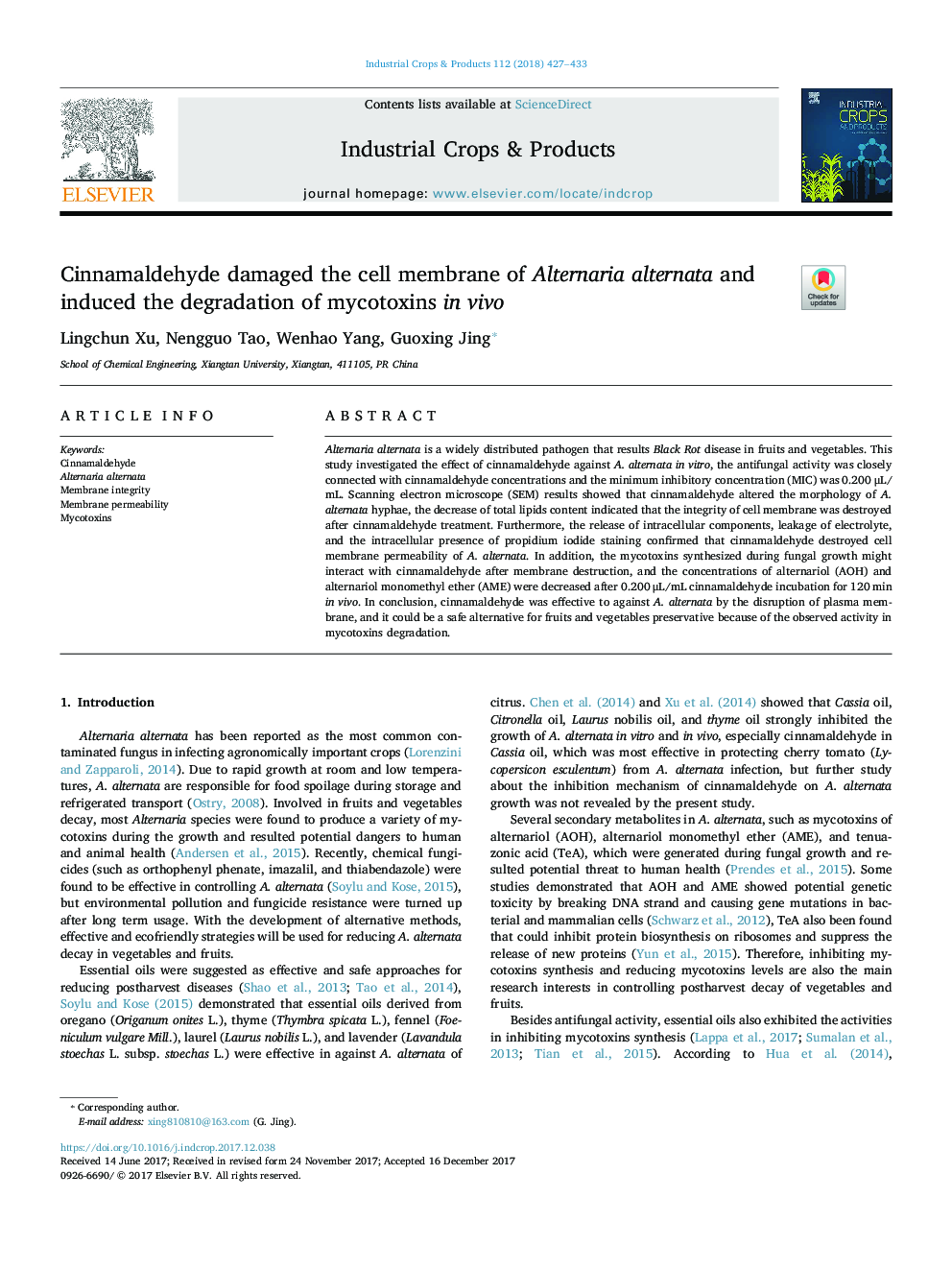| کد مقاله | کد نشریه | سال انتشار | مقاله انگلیسی | نسخه تمام متن |
|---|---|---|---|---|
| 8880761 | 1624798 | 2018 | 7 صفحه PDF | دانلود رایگان |
عنوان انگلیسی مقاله ISI
Cinnamaldehyde damaged the cell membrane of Alternaria alternata and induced the degradation of mycotoxins in vivo
دانلود مقاله + سفارش ترجمه
دانلود مقاله ISI انگلیسی
رایگان برای ایرانیان
کلمات کلیدی
موضوعات مرتبط
علوم زیستی و بیوفناوری
علوم کشاورزی و بیولوژیک
علوم زراعت و اصلاح نباتات
پیش نمایش صفحه اول مقاله

چکیده انگلیسی
Alternaria alternata is a widely distributed pathogen that results Black Rot disease in fruits and vegetables. This study investigated the effect of cinnamaldehyde against A. alternata in vitro, the antifungal activity was closely connected with cinnamaldehyde concentrations and the minimum inhibitory concentration (MIC) was 0.200 μL/mL. Scanning electron microscope (SEM) results showed that cinnamaldehyde altered the morphology of A. alternata hyphae, the decrease of total lipids content indicated that the integrity of cell membrane was destroyed after cinnamaldehyde treatment. Furthermore, the release of intracellular components, leakage of electrolyte, and the intracellular presence of propidium iodide staining confirmed that cinnamaldehyde destroyed cell membrane permeability of A. alternata. In addition, the mycotoxins synthesized during fungal growth might interact with cinnamaldehyde after membrane destruction, and the concentrations of alternariol (AOH) and alternariol monomethyl ether (AME) were decreased after 0.200â¯Î¼L/mL cinnamaldehyde incubation for 120â¯min in vivo. In conclusion, cinnamaldehyde was effective to against A. alternata by the disruption of plasma membrane, and it could be a safe alternative for fruits and vegetables preservative because of the observed activity in mycotoxins degradation.
ناشر
Database: Elsevier - ScienceDirect (ساینس دایرکت)
Journal: Industrial Crops and Products - Volume 112, February 2018, Pages 427-433
Journal: Industrial Crops and Products - Volume 112, February 2018, Pages 427-433
نویسندگان
Lingchun Xu, Nengguo Tao, Wenhao Yang, Guoxing Jing,